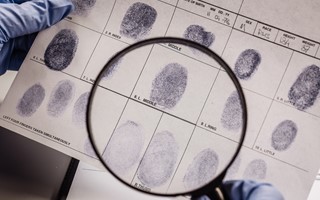Insight August 12, 2021
Cell site analysis is not an exact science, however, it is a recognised and accepted method of geolocating a mobile phone or device to an area.
What is Cell Site Analysis?
Simply put, it is a process that’s used to establish whether a mobile phone could have been in a particular geographical location or address by using call data records (CDRs) of a device that is attributed to a user.
Back in the days of phone bills, user data would provide a list of dates and times when a phone call was made or received and would state how much the customer had been charged for that communication. The call data records that are used for cell site analysis are similar in appearance to this, however they are minus the monetary charge but specifically, for our analysis, will include the locations of the cell sites that were used to make the calls.
Where are Cell Sites found?
Cell sites come in all different shapes and sizes, and it’s highly unlikely that you haven’t noticed the gigantic masts on the side of motorways. However, cell sites can also appear on the side of buildings, a scene that’s particularly evident in metropolitan areas like London, and some of them are even inside buildings themselves, almost resembling a Wi-Fi router. These can be in plain sight and affixed to the building, or on occasions hidden in shop signage.
Where do you get the data from?
Ultimately, a mobile phone needs a cell site (or Wi-Fi) to communicate. Cell Site Analysis relies on the call data records that are provided to us. The CDR must be obtained through a law enforcement agency (or a court order), and an officer overseeing a case will request that data via mobile network providers such as O2, Vodafone, EE and Three. The police will approach the networks and notify them that they have a phone of interest, be it a suspect, victim, or other involved party, and inform them that they want to obtain the call data records for that phone for a specific time period.
Take a suspect who’s believed to have committed a murder, for example. If he or she had a phone on them at the time in which the crime was committed, the police officer would request call data records for before and after the time of the murder (leading up to the offence and immediately after). The officer often won’t immediately understand the CDR, they just see a multitude of data on a spreadsheet. That’s where we come in.
The data will be passed over to us, and we will be asked to comment on the mobile phone's movements, specifically around the dates and times that the police are interested in. The amount of analysis requested is done on a case-by-case basis, and usually starts from an hour prior to the key time of interest. On occasion, however, forces can request that we analyse two days’ worth of activity. We then look at the call data, analyse it, and determine where we think the phone has been throughout that time period. What we can usually identify is that a device used a specific cell site which provides coverage to a particular area, which may include certain addresses.
How do you use this information?
Using survey equipment, we conduct an RFPS (Radio Frequency Propagation Survey). This involves driving round an offence location, alibi location or home address, with the equipment acting like a mobile phone itself. It often contains a sim card linked to the specific mobile network of interest (however we can also use multi sim & scanner-based solutions), and will record what cell sites are serving that location. Following the survey, we will produce a report that provides our opinion on where we think the phone has moved to, or where the phone has been, in a geographical area.
Our analysis can then be broken down into two parts. Firstly, we review the CDRs containing the mobile phone information, and then we review the data that we’ve received from an RFPS.
The report will also consist of mapping documents to show where we have driven and where the cell IDs have been detected. This will look like a map containing multiple pinpoints, showing where we think the phone could have been in a given area. It can be narrowed down to 3-5 streets on occasion, however if you’re dealing with a larger cell site it may cover a much wider geographical area.
What are the strengths and limitations of Cell Site Analysis?
While this method of digital forensics is effective for placing a phone into a general vicinity, it cannot pinpoint to a particular street, property, or location. It therefore requires other more traditional forms of forensic evidence, such as fingerprints, DNA or CCTV, to be used to corroborate any conclusions or inferences drawn from cell site analysis.
In today’s society we have multiple networks and technologies at our fingertips. This includes 2G, which is fairly dated but still in use for voice calls, 3G and 4G which are the common cellular networks, and more recently we’ve seen the introduction of 5G.
As you can imagine, phone bills for calls and texts are very low now. Data sessions, however, are constant. Your phone is constantly receiving notifications such as news updates and social media notifications. Each time you receive a notification, this has the potential to trigger a new data session. The more “noisy” phones are becoming with data transmission, the more beneficial it is for cell site analysis as we have more information to work from.
Data sessions are particularly useful when a suspect has a criminal mind because they are more likely to be aware of our tactics. Certainly, with organised crime groups, criminals are very much aware that we can use their phone data to observe their movements. In these types of cases, criminals can utilise an all-too-common ploy: they can use a “dirty” phone and they can use a “clean” phone. “Dirty” phones are used purely for the purpose of orchestrating drug deals, whereas “clean” phones are used for everyday life activities. As such, the majority of cell phone analysis can include potentially co-locating phones together.
It’s important to note that we can’t say for certain or prove who was using a given phone, all we can do is make inferences. We then present the technical information to a jury in a fair and balanced way, and in a format that allows them to understand what this can potentially show about a suspect’s activities.
Cell Site Analysis Expertise
Forensic Access boasts a world-class team of forensic scientists operating in state-of-the-art facilities. All forensic work is carried out to the highest quality standards.
All defence work is supported by dedicated Casework Managers who provide end-to-end assistance and coordination. Direct access to our team of scientists helps barristers and solicitors prepare a more effective defence strategy, and all expert witness reports are thoroughly documented and peer reviewed.
To find out more about our forensic services, or for a free consultation and quote, fill-in our online contact form or Tel: 01235 77480.


